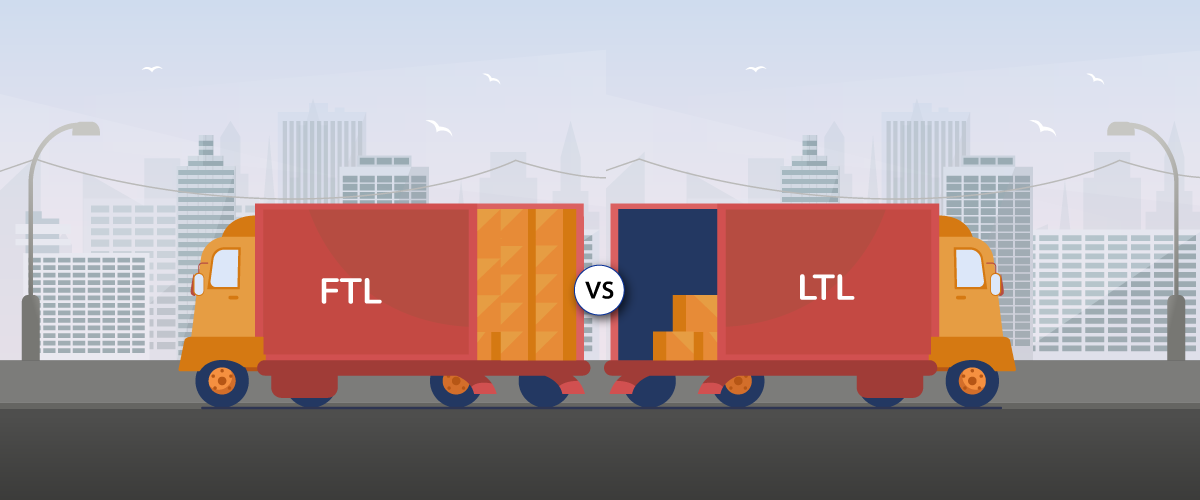Shipping decisions between less-than-truckload (LTL) and full truckload (FTL) directly affect your costs, delivery speed, and customer satisfaction. When planning freight transportation, logistics professionals working with carriers such as Challenger Motor Freight must evaluate several factors. Understanding the distinct advantages of each shipping method helps determine which option provides better value for specific shipment scenarios.
Cut-off points
LTL shipping becomes the clear choice when your shipment falls below specific thresholds. LTL almost always offers better pricing for shipments under 6 standard pallets (48″x40″), weighing less than 8,000 pounds, and occupying less than 12 linear feet of trailer space. A typical LTL shipment might consist of 3-4 pallets weighing 2,500 pounds, costing 30-40% less than booking a full truck.
Full truckload shipping becomes more economical at predictable break points. When your shipment exceeds 10 pallets, 15,000 pounds, or 24 linear feet of trailer space, the economics typically favour full truckload. A standard 53-foot trailer can hold 26-30 pallets, depending on their configuration. At 12-15 pallets, you’ll often find yourself in a “grey zone” where quoting both options makes sense.
The density of your freight also creates clear decision points. Products like automotive parts at 15-20 pounds per cubic foot hit LTL weight limits more quickly than retail merchandise at 6-10 pounds per cubic foot, pushing dense shipments toward full truckload even with fewer pallets.
Delivery precision
Full truckload shipping provides delivery precision that LTL cannot match. A truckload shipment travelling 500 miles arrives within a 2-hour delivery window with 95% reliability. The direct point-to-point movement means your Chicago to Atlanta shipment (730 miles) typically comes in 2 days versus 3-5 days for LTL service over the same route.
LTL shipping involves multiple terminal stops where your freight changes trucks. A shipment from Dallas to Portland typically passes through 3-4 terminals, with each transfer adding 6-12 hours to transit time. This hub-and-spoke system means an LTL shipment travelling 800 miles might take 5-6 business days instead of the 2-3 days a full truckload would require.
For time-critical shipments with specific delivery windows, the added cost of full truckload service (often 25-35% more for partial trailer loads) frequently justifies itself through more predictable arrivals. Manufacturing plants with just-in-time inventory systems or retailers with scheduled floor displays typically favour full truckload for its timing reliability despite the premium price.
Pricing structure clarity
LTL and full truckload pricing follow entirely different models that create clear decision points:
- LTL rates vary by freight class (from class 50 to class 500), with lower classes costing less
- A class 85 LTL shipment of 2,000 pounds travelling 800 miles might cost $680, while the same shipment at class 150 could cost $1,250
- Full truckload rates typically range from $1.50-$3.00 per mile, depending on lane and current market conditions
- A dedicated 800-mile complete truckload shipment might cost $1,600-$2,400 regardless of weight (up to legal limits)
- LTL accessorials add up quickly: residential delivery ($75-150), liftgate service ($50-100), limited access fees ($75-125)
For shipments approaching 10,000 pounds, these pricing structures often intersect. A 9,500-pound shipment of class 85 commodities might cost nearly the same as a partial truckload rate, making the direct service of full truckload more attractive at essentially the same price point.
The key to maximum efficiency lies in adapting your shipping method to current needs rather than applying a one-size-fits-all approach. Many companies save 15-22% on annual freight costs by strategically alternating between LTL and full truckload based on specific shipment characteristics rather than habit or convenience.


